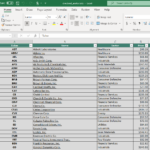What if you could get the performance of private equity (PE) without locking up your capital for years? Private equity has long been a top-performing asset class, but its illiquidity has kept many investors on the sidelines or second-guessing their allocations. Enter PEARL (private equity accessibility reimagined with liquidity). It is a new approach that offers private equity-like returns with daily liquidity. Using liquid futures and smarter risk management, PEARL delivers institutional-grade performance without the wait.
This post unpacks the technical foundation behind PEARL and offers a practical roadmap for investment professionals exploring the next frontier of private market replication.
State of Play
Over the past two decades, PE has evolved from a niche allocation to a cornerstone of institutional portfolios, with global assets under management exceeding $13 trillion as of June 30, 2023. Large pension funds and endowments have significantly increased their exposure, with leading university endowments allocating approximately 32% to 39% of their capital to private markets.
Industry benchmarks like Cambridge Associates, Preqin, and Bloomberg PE indices are published quarterly. They have reporting lags of one to three months and are not investable. These benchmarks report annualized returns of 11% to 15% and Sharpe ratios above 1.5 for the industry.
A few research-based, investable daily liquid private equity proxies investing in listed stocks have been developed. These include the factor-based replication inspired by HBS professor Erik Stafford, the Thomson Reuters (TR) sector replication benchmark, and the S&P Listed PE index. While these proxies offer real-time valuation, they markedly underperform in risk-adjusted terms, with annual returns of 10.9% to 12.5%, Sharpe ratios of 0.42 to 0.54, and deeper maximum drawdowns of 41.7% to 50.4% compared to industry benchmarks. This disparity underscores the trade-off between liquidity and performance in PE replication.
PEARL aims to bridge the gap between liquid proxies and illiquid industry benchmarks. The objective is to construct a fully liquid, daily replicable strategy targeting annualized returns of ≥17%, a Sharpe ratio of ≥1.2, and a maximum drawdown of ≤20%, by leveraging scalable futures instruments, dynamic graphical models, and tailored asymmetry and overlay techniques.
Core Methodological Approach
Liquid Futures Instruments
PEARL invests in a large universe of highly liquid futures contracts on equity indices like the S&P 500, specific sectors and international markets, foreign exchange, Vix futures, interest rates, and commodities. These instruments typically have average daily trading volumes exceeding $5 billion. This high liquidity enhances scalability and reduces transaction costs compared to traditional replication strategies focused on small-cap equities or niche sectors. Equity futures are used to replicate the long-term returns of private equity investments, while exposures to other asset classes help improve the overall risk profile of the allocation.
Graphical Model Decoding
We model the replication process as a dynamic Bayesian network, representing allocation weights wt(i) for each asset class i in {Equities, FX, Rates, Commodities}. The framework treats these weights as hidden state variables evolving in time according to a state-space model. The observed NAV follows:
Where rt(i) is the return of asset class i at time t. We infer the sequence {w_t} via Bayesian message passing coupled with maximum likelihood estimation, incorporating a Gaussian smoothness prior (penalty λ = 0.01) to enforce continuity across daily updates.
Key features of graphical-model approach:
State-space formulation: captures the joint dynamics of allocations and returns, extending Kalman filter approaches by modeling cross-asset interactions.
Dynamic inference: prediction–correction via message passing refines weight estimates as new data arrives.
Interaction modeling: directed links between latent weight variables across time steps allow for richer dependency structures ( e.g., equity–rate spillovers).
Continuous updating: allocations adapt to regime changes, leveraging full joint distributions rather than isolated regressions.
This graphical-model approach yields stable, interpretable allocations and improves replication accuracy relative to piecewise linear or Kalman-filter methods.
In Figure 1, we used a simplified graphical model showing the relationship between observed NAV and inferred allocation as time goes by. For illustration purpose, we used different assets, with one being an Equity shortened in Eq, a second one an exchange rate shorted in Fx, a third one, an interest rates instrument shortened in Ir, and finally a commodity asset shortened in Co.
Figure 1.

Asymmetric Return Scaling
To emulate the valuation smoothing inherent in PE fund reporting, we apply an asymmetric transformation to daily returns. Specifically,

resulting in a 10% reduction of negative returns. Empirical analysis indicates this adjustment decreases average monthly drawdown by approximately 50 basis points without materially affecting positive return capture.
Tail Risk and Momentum Overlays
PEARL integrates two robust overlay strategies: tail risk hedge volatility strategy and risk-off momentum allocation strategy. Both are grounded in empirical machine‐learning and CTA‐style signal filtering, to mitigate drawdowns and enhance risk‐adjusted returns:
Tail Risk Hedge Volatility Strategy: A supervised machine‐learning classifier issues probabilistic activation signals to switch between front‑month (short‑term) and fourth‑month (medium‑term) VIX long futures positions. The model leverages three core indicators:
20‑Day Volatility‑Adjusted Momentum: Captures recent VIX futures momentum normalized by realized volatility.
VIX Forward‑Curve Ratio: Ratio of next‑month to current‑month VIX futures, serving as a carry proxy.
Absolute VIX Level: Reflects mean‑reversion tendencies during elevated volatility regimes.
Backtested from January 2007 through December 2024, this overlay:
Increases the equity allocation annual return from 9% to 12%.
Reduces annualized volatility from 20% to 16%.
Curbs maximum drawdown from 56% to 29%.
Increases the portfolio Sharpe ratio by 71% and delivers a 2.5× improvement in Return/MaxDD in comparison to a long equity portfolio.
Risk‑Off Momentum Allocation
Built on a cross‑asset CTA replication framework, this strategy systematically targets trends inversely correlated with the S&P 500.
Key metrics include:
Diversification Benefit: Achieves a -36% correlation versus the S&P 500.
Downside Capture: Generates positive returns in 88% of months when the S&P 500 falls more than 5%.
Performance in Stressed Markets: From 2010 to 2024, delivers an average monthly return of 3.6% during equity market downturns, outperforming leading CTA benchmarks by a factor of two in months with negative equity returns.
Collectively, these overlays provide a dynamic hedge that activates during risk‑off periods, smoothing equity market shocks and enhancing the overall portfolio resilience.

Implementation and Validation
Data Partitioning
Daily return series are obtained for three liquid PE proxies from Bloomberg:
SummerHaven Private Equity Strategy (Stafford) — ticker SHPEI Index
Thomson Reuters Refinitiv PE Benchmark (TR) — ticker TRPEI Index
S&P Listed Private Equity Funds (Listed PE) — ticker SPLPEQNT Index
Data span from January 2005 through January 21, 2025.
Training Period: January 2005 to December 2010 for graphical model parameter estimation.
Out‑of‑Sample Testing: March 31, 2011 (Preqin index inception to January 21, 2025.
Quarterly PE benchmarks used for validation include Cambridge Associates, Preqin, Bloomberg Private Equity Buyout (PEBUY), and Bloomberg Private Equity All (PEALL).
Replication Workflow
Decoding: Infer latent weight vectors for each proxy (Stafford, TR, Listed PE) via the graphical model.
Asymmetry: Transform decoded return series using the specified asymmetric scaling.
Overlay Integration: Blend the tail risk hedge and momentum filter signals, capping each overlay allocation at 15% of portfolio nominal exposure.
Constraints and Backtesting:

and a maximum daily turnover of 2%.
Empirical Findings
From March 2011 to June 2025, PEARL achieved an annualized additional return of 4.5% to 6.2% relative to the liquid proxies, while reducing maximum drawdowns by more than 55% and lowering volatility by approximately 45%. The Sharpe ratio shortfall with respect to the PE non investable industry benchmark was narrowed by 80%, confirming the method’s efficacy in reconciling liquidity with PE‐like performance.
Key Takeaway
Liquid PE strategies have been around for years, but they’ve consistently fallen short, delivering lower returns, weaker Sharpe ratios, and steep drawdowns. PEARL doesn’t replicate actual private equity fund performance, but it gets significantly closer than previous attempts. By combining dynamic asset allocation models with tailored overlays, it captures many of the statistical traits investors seek in private markets: higher risk — adjusted returns, reduced drawdowns, and smoother performance — while remaining fully liquid. For investment professionals, PEARL offers a promising advancement in the ongoing effort to bridge the gap between private equity appeal and public market accessibility.

























